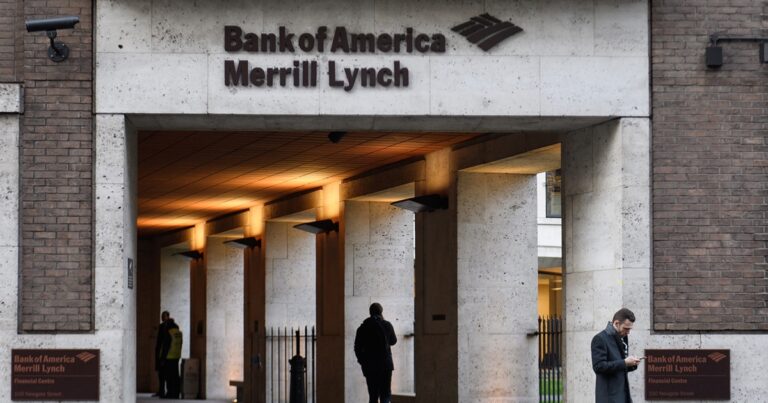The largest wealth management divisions of the publicly traded national banks claim they are well-prepared for any economic turmoil in the wake of President Donald Trump’s series of tariff announcements (and a brewing trade war between the U.S. and China).
Bank of America, Morgan Stanley and Wells Fargo each released their first-quarter earnings this week, with all three reporting year-over-year revenue growth in their wealth divisions.
“The recent market volatility has underscored that investment discipline and portfolio fundamentals work,” Merrill Wealth Co-President Eric Schmipf said. “Our clients are well diversified, staying invested and trusting the expert advice of their advisors backed by insights from our Chief Investment Office and BofA Global Research.”
According to Bank of America’s earnings, revenue for the wealth division (including Merrill Wealth and Private Bank) climbed to $6 billion, an 8% jump from 2024’s first quarter. The increase was due to higher asset management fees “from strong AUM flows and higher market levels.”
The firm’s expenses also jumped 9% to $4.7 billion due to “revenue-related incentives” and more expenditures on people and technology. Merrill Wealth Management had $3.5 trillion in client balances, a 4% growth from Q1 in 2024, and added about 6,400 net new households in the first quarter.
Meanwhile, Wells Fargo revealed that total revenue in its wealth and investment management business dipped 2% from the fourth quarter, though it was up 4% year over year.
In the bank’s Q1 earnings call, CEO Charlie Scharf said the firm supported President Donald Trump’s “willingness to look at barriers to fair trade” in the form of tariff announcements that have gyrated the market in recent weeks and was “prepared for a slower economic environment in 2025,” dependent on the timing and substance of policy choices out of the White House.
“Though we have heard a great deal from our clients as they work through this transitory environment, we have not seen an impact on their condition yet,” he said.
According to Chief Financial Officer Mike Santomassimo, wealth’s revenue rose year-over-year due to higher asset-based fees tied to market valuations, brought down by lower net interest income due to higher deposit costs.
Santomassimo also reported that despite the volatility in the first quarter, clients’ asset allocation remained “relatively stable,” while the moves to cash alternatives from deposits continued slowing. He also noted that a continued market downturn could affect the firm’s wealth business by reducing revenue-related expenses.
At Morgan Stanley, net new assets in the firm’s wealth division jumped 66% quarter-over-quarter to $93.8 billion, based on elevated flows related to advisor-led clients, positive recruiting trends, and self-directed channels.
Net revenues were at $7.3 billion, slightly down from the fourth quarter, though up 6% YoY. Advisor-led client assets were approximately $4.7 trillion, up 10% from the year before, and fee-based assets were up 11% (both asset totals were about flat from the fourth quarter).
Self-directed assets dipped 10% from the fourth quarter to $1.29 trillion (though still up 8% YoY) due to choppiness between quarters and market shifts.
In Morgan Stanley’s call detailing first-quarter earnings, CEO Ted Pick said the firm remained “cautiously optimistic” that the economy would not tip into recession due to the turmoil resulting from Trump’s tariff push.
“The short answer is in the opening of the quarter, we have not seen a slowdown. Is it bumpier for some clients? Of course it is,” he said. “And we have to see how they respond to that over the course of the weeks and months to come.”
UBS will announce first-quarter earnings on April 30.





